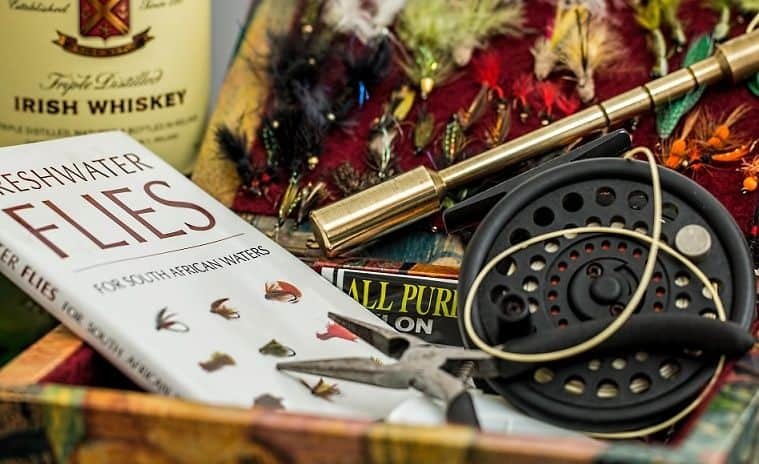How to Assemble Your Fly Fishing Gear
Let’s take a look at the main components of your fly fishing outfit and how to get it ready for fishing. It’s important to assemble your own gear and have a good understanding of the knots required to attach each component.
The Fly Rod
The fly rod is your principal fishing tool. It often is configured with multiple sections. Sometimes as many as 5 or more.
How to assemble your fly rod
Note: To assemble the various sections make sure that the male portion of the ferrules are coated with a thin layer of paraffin wax. If your rod is new, you can skip this step as manufactures will have already treated them.
- Most fly rods are manufactured in four sections these days. Assemble the top two sections first. Then assemble the bottom two sections next. Finally, attach the two larger sections together. This helps avoid the possibility of breaking the rod as you work your way from one end or the other.
- Insert the male end of the ferrule carefully into the female portion and snugly press them together. Make sure that you are applying pressure in a straight line and not angled.
- Do not jam them together just make sure they are tight. During the course of a fishing day you’ll want to check them several times to make sure they are not coming apart.
- After all of the sections of the rod are assembled then sight down the guides like a riffle and be sure they are lined up as closely as you can get them.
How to disassemble your fly rod
- Disassemble your rod in the reverse order. Separate the top two sections from the bottom two sections, thus splitting the rod in two equal portions. Then part the top two, and then the bottom two.
- Make sure you are keeping the sections inline with each other.
- Your ferrules should come apart relatively easy. If they seem stuck, do not apply a ton of force. Try gently warming the rod inside, or in your vehicle with a heater. Use some non-slip rubberized carpet pad for added grip. Keep everything inline and don’t over do it. Danger: Use a friend on one end, and you on the other. Use the non-skid pad and keep everything straight! Finally, if all else fails you’ll need to send it back to the manufacture.
The Fly Reel
The reel is responsible for holding your fly line and backing, retrieving the line, and applying drag to a running fish. You’ll first attach the backing to reel. When you attach the reel to the reel seat of the rod make sure that the guides and the reel are coming off of the same side. The backing must be attached to the arbor of the reel securely. Use one of the two knots below.
The Backing
Backing is a braided Dacron, that appears more like thin string, than fly line. Backing is attached to the reel before the fly line. It is the safety net should a fish pull all of the line off of your reel. Typically, the minimum amount of backing needed is around 100 yards. The backing will attach to the rear portion of the fly line.
The Fly Line
Fly line is responsible for “loading” or bending the fly rod. The rear portion of the fly line connects to the backing, while the front end connects to the butt section of the leader.
The Leader
The leader brides the gap between the fly line and fly. It’s primary job is to transfer the casting energy in the fly line smoothly to the fly. It acts as a buffer so that fish viewing our fly do not see the fly line. The butt section of the leader connects to the tip of the fly line.
The Tippet
Tippet is the thin material at the tip of your leader. It resembles normal nylon fishing line. Tippet can either be used by itself to create leaders, or attached to the front end of a tapered leader to extend it.
The Fly
The fly attaches to the tippet. It can be attached with a myriad of different knots and most anglers will have a favorite, we’ll show some of the most common. The fly attaches to the fish!


